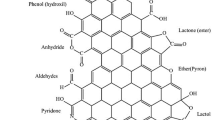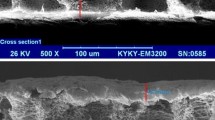Abstract
This paper was investigated to clarify the possibility of a biodegradation of materials adsorbed on different porous granular-activated carbons (GACs) such as coal-& coconut-based GAC. Total organic carbon, humic substance and ammonia were used to compare their removal efficiencies. The objective of this study is to determine the adsorption capacity of bioregenerated GAC. When raw water reacted with chloride, the yield of THMs increased as a function of the input amount of chloride. The formation of trihalomethanes (THMs) was investigated in water treated with chlorine when humic acid was used as THM precursor. As the input amount of chloride in raw water increased by two or five-fold to remove the NH3, the chloroform of the THMs significantly increased also five or ten-fold. It was found that the chloroform was significantly removed by the treatment of biological activated carbon (BAC) in comparison with the ozone treatment, and the removal efficiency of THMs in coal-typed GAC was 10–30% better than coconut-typed GAC due to the biological degradation on the surface of the activated carbons.
Similar content being viewed by others
References
Morin, P. and A. K. Camper (1997) Attachment and fate of carbon fines in simulated drinking distribution system biofilms.Wat. Res. 31: 399–410.
Sich, H. and J. Rijn (1997) Scanning electron microscopy of biofilm formation in denitrifying, fluidized bed reactors.Wat. Res. 31: 733–742.
Park, Y. (1997) Impact of ozonation on biodegradation of trihalomethanes in biological filtration system.J. Ind. Eng. Chem. 7: 349–357.
Weber, W., M. Pirbazari, and G. Melson (1978) Biological growth on activated carbon: An investigation by scanning electron microscopy.Environ. Sci. Tech. 12: 817–819.
Sison, N., K. Hanaki, and T. Matsuo (1996) Denitrification with external carbon source utilizing adsorption and desorption capability of activated carbon.Wat. Res. 30: 217–227.
Park, Y., M. Jung, and S. Park (1996)Research Report of HHI-Ulsan U.
Nir, A. and L. M. Pismen (1972) Simultaneous intraparticle forced convection, diffusion and reaction in a porous catalyst.Chem. Eng. Sci. 32: 35–41.
Author information
Authors and Affiliations
Corresponding author
Rights and permissions
About this article
Cite this article
Park, Y.G. The effect of porosity of seiving particles on the romoval efficiency of organic substances via biofilter in the fixed bed. Biotechnol. Bioprocess Eng. 7, 31–37 (2002). https://doi.org/10.1007/BF02935877
Received:
Accepted:
Issue Date:
DOI: https://doi.org/10.1007/BF02935877




